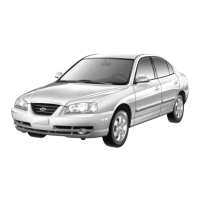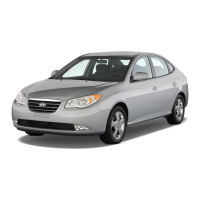Do you have a question about the Hyundai Elantra 2017 and is the answer not in the manual?
Provides a front and rear view of the vehicle's exterior components and their locations.
Details the layout and components of the vehicle's interior, including the instrument panel.
Identifies key components within the engine compartment for basic inspection and maintenance.
Covers essential safety advice including seat belt usage, child restraints, and hazard awareness.
Details the adjustment and safety features of front and rear seats, including headrests and seat warmers.
Explains proper seat belt usage, safety precautions, warning lights, and restraint systems.
Provides guidance on selecting, installing, and using child restraint systems for passenger safety.
Explains the operation, location, and safety precautions associated with the vehicle's advanced airbag system.
Covers remote key, smart key, and immobilizer system functions for vehicle access.
Details operation of door locks from outside and inside the vehicle, including auto lock/unlock features.
Explains electric power steering, tilt/telescope steering, and horn operation for driver comfort and control.
Explains the instrument cluster layout, gauges, warning lights, and LCD display messages.
Overview of the multimedia system, including connectivity ports, antenna, and audio controls.
Instructions for connecting external audio devices via AUX, USB, or iPod® ports for playback.
Guide to using Bluetooth for hands-free calling, phone pairing, and voice recognition features.
Details operation of audio controls for radio, media, and phone modes without a touch screen interface.
Essential checks and adjustments before starting the vehicle for safe operation.
Explains the functions and precautions for using the key ignition switch and push-button start.
Describes the operation of the automatic transmission, including gear selection and driving practices.
Covers power brakes, disc/drum brake components, parking brake, ABS, ESC, and VSM systems.
Guide to using Smart Cruise Control, including system operation, settings, and limitations.
Explains the function, operation, and limitations of the Lane Keeping Assist System for driver assistance.
Instructions on how to operate the hazard warning flasher for signaling emergencies and warnings.
Troubleshooting steps for when the engine fails to turn over or turns over slowly, including battery checks.
Information on the TPMS, including checking tire pressure, warning lights, and malfunction indicators.
Step-by-step guide for changing a flat tire, including using the jack and tools.
Provides recommendations and procedures for emergency towing, including proper lifting and vehicle support.
Diagram and identification of key components within the engine compartment for routine checks.
Details recommended maintenance intervals for various vehicle components based on mileage and time.
Covers tire care, rotation, replacement, alignment, balance, and safety regulations.
Explains the types of fuses used, their locations, and procedures for replacement and fuse switch operation.
Provides key external dimensions of the vehicle, including length, width, height, and tread measurements.
Details engine specifications, including displacement, bore x stroke, firing order, and number of cylinders.
Lists tire sizes, wheel sizes, inflation pressures, and wheel lug nut torque specifications.
Contact information for HYUNDAI Motor America regional offices for operational questions.
Guidance on how to report potential vehicle safety defects to NHTSA and HYUNDAI MOTOR AMERICA.
| Brand | Hyundai |
|---|---|
| Model | Elantra 2017 |
| Category | Automobile |
| Language | English |












